Rocket R-5M: the firstborn of the nuclear-missile era
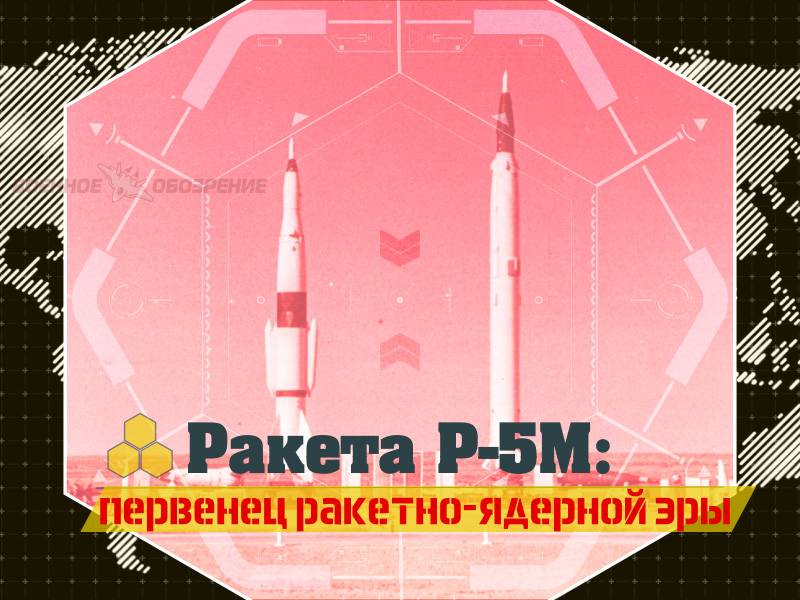
February 2 1956 for the first time in the world stories a ballistic missile with an atomic warhead
In the history of the national armed forces there were two famous operations called the “Baikal”. One of them, “Baikal-79”, became known almost immediately to the whole world: this was the name of the operation to overthrow the Hafizullah Amin regime in Afghanistan on 27 December 1979 of the year. Few people knew about the conduct of the second, which was simply called “Baikal”, even in the USSR - only those who were directly involved in the organization and conduct of this operation. Meanwhile, it is from her that the beginning of the nuclear-missile era must be counted. 2 February 1956 from the Kapustin Yar test site in the direction of the Karakumov launched a nuclear missile R-5M - for the first time not only in our country but also in the world.
Having flown an estimated distance of 1200 kilometers, the rocket hit the target, albeit with an almost maximum deviation. The fuse worked, a chain reaction went - and a characteristic atomic mushroom appeared at the point of impact. Foreign means of tracking nuclear tests in the Soviet Union, of course, noted this fact, counting even the power of the undermined charge - 80 kilotons in TNT. But it could not have occurred to anyone abroad that it was not just a test, but a test of the world's first ballistic missile with a nuclear charge ...
The combat crew of the P-5M rocket. Photo from the publication of the Ministry of Defense "Landfill Kapustin Yar. 70 years of trials and launches. Declassified photos »
The birth of the "five"
The R-5M rocket was born with its birth, ultimately, by the failure that befell Sergei Korolev and his rocket men while working on the R-3 rocket. However, the developers themselves were slightly guilty in that: both then and now the viewpoint prevailed that in the mid-1950's conditions there was no chance of success in creating a ballistic missile with a range of 3000 kilometers. There was simply no experience, no materials, no equipment for creating oxygen-kerosene engines, allowing to throw a warhead over such a distance.
"Three" and did not come to the start, but became the progenitor of the "five". Work on the P-5 rocket began immediately after the developers decided to abandon the refinement of the experimental P-3 before testing. By October 30 1951, the draft design of the P-5 was ready. Those who were familiar with the rocket technology of that time were well aware that the appearance of a new long-range ballistic missile, that is, the traits of all its predecessors — P-1, and P-2, and of course P-3. But at the same time there were significant differences, which allowed to bring to the implementation of the project of the first Russian ballistic missile with a nuclear warhead. In particular, the hermetic instrument compartment disappeared from it, which provided significant weight savings, the head end changed, and most importantly, the designers refused to insulate the oxygen compartment. Yes, because of this, it was necessary to feed the oxidizer supply before the start, but again, the weight decreased, which means that the range increased - which, in fact, was required to achieve.
The government decree on the start of development work on the "five" issued 13 February 1952 year. Exactly one year later, a new resolution of the USSR Council of Ministers appeared - already about conducting flight tests of the P-5. The first start of the “five” from the Kapustin Yar test site took place on 15 March 1953, and the last - on February 1955. In total, 34 rockets were launched, and only three launches from the first test series were unsuccessful. The groundwork for the first 12 production rockets was already ready, work on them had already begun - but then the project was stopped. A government decree of 16 on April 1955 of the year recognized the work on the P-5 completed, mass production was ordered to be curtailed, and all efforts redirected to the creation of a modernized P-5 with a nuclear warhead.
Soviet DAR
The Five was good for all but one: it carried an ordinary warhead with a maximum warhead of one ton of explosives. Meanwhile, by that time it had become absolutely clear that in the conditions of the growing “cold war” an advantage over the opposing side would be received by those who manage to create a nuclear warhead missile. And such people were found in the Soviet Union.
The idea to equip the missile with an atomic warhead was put forward by the rocket men themselves, and the Soviet nuclear scientists were instructed to implement their idea. And they completely coped with this task: as early as October 1953, when R-5 was just beginning a series of tests, representatives of KB-11 - the current Russian Federal Nuclear Center "All-Russian Research Institute of Experimental Physics", and then the main creator of nuclear physics. of the USSR shield, they suggested using the new RDS-4 ammunition as a warhead for the "fives". And December 17 of the same year of work on translating this proposal into life was approved by another government decree.
This development was given the name DAR - "Long-Range Atomic Rocket". And the first mention of the P-5M rocket appears already in half a year, in April, 1954. By this time, the work on the novelty was already in full swing and in the Moscow region research institute-88, and in Nizhny Novgorod KB-11. After all, according to the original plans, the tests of the modernized “five” were to begin in October of the same year, and end with valid launches and state tests - including with a nuclear warhead! - in November 1955. But as always, the reality has made its own adjustments in these terms. On state tests Р-5М appeared only in January 1956 of the year. By the same time, the first nuclear weapon, which the new rocket was to throw at 1200 kilometers, was ready.
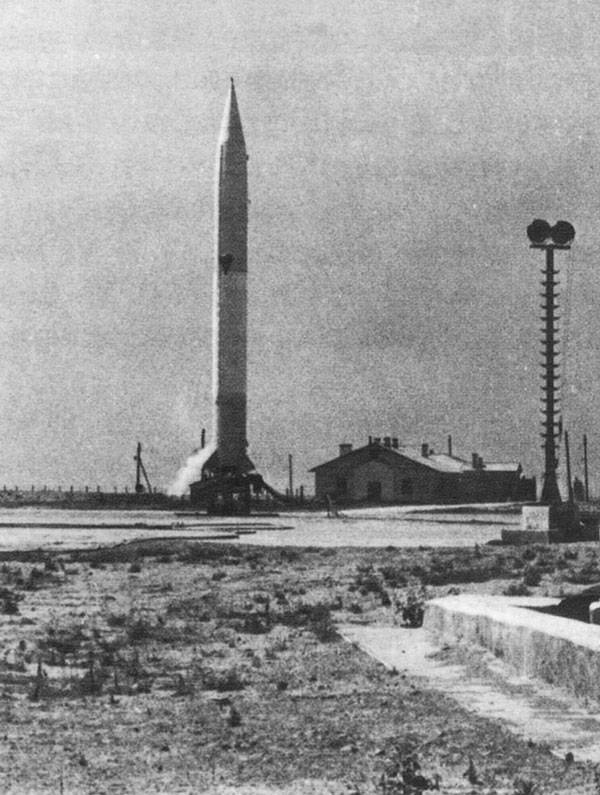
Preparation of the P-5M rocket for launch at the Kapustin Yar launch site. Photo from defendingrussia.ru
"Watching" Baikal "!"
But before putting the world's first ballistic missile with a nuclear warhead on the launching table, it was necessary to check all the subtleties of the “special product” docking with the carrier. For this purpose, nuclear warhead dummies were used - and with them they carried out the first four launches as part of state tests. The first was held on 11 on January 1956. The rocket flew safely through the distance it had set, and hit the target just as well within the “ellipse of dispersion” —that is, it did not deviate too much from the target course and the planned fall site.
This result is very inspired by the developers. After all, he confirmed not only the loyalty of the chosen solution to equip the rocket with a shorter and blunt nose part, which the gunsmiths insisted on, who were required to ensure that the rocket did not approach the ground too fast. First of all, a successful launch proved that the seriously complicated P-5M control system, in which practically all elements were duplicated, and some of them twice, works without serious failures. But it wasn’t without overlays, although they didn’t have a serious impact on the launch results. However, the detected rudder air flutter forced the developers to take urgent measures, and on the following rockets, the rudder design was partially changed, and the control system was made more stringent.
It is noteworthy that in order to make sure that the duplicated control systems are reliable, on the next three missiles, before launch, some important elements were specially “spoiled”. And nothing! Like the first “state-owned” P-5M, the next three also started without failures and hit the target. And this meant that one could finally proceed to the last, most important stage of testing - launching a missile with a real nuclear warhead, albeit with reduced power.
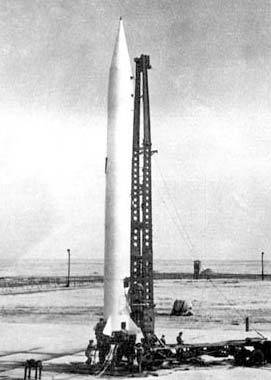
The launch of the P-5M rocket at the Kapustin Yar test site. Photo from RSC Energia website
One of the founders of the domestic rocket industry, Academician Boris Chertok, spoke well about the conditions in which these tests took place in his book "Rockets and People". Here is what he wrote: “Korolyov was nervous about the delays in the preparation of the rocket. He did not want to allow Nikolai Pavlov (Deputy Head of the Main Directorate for Design and Testing of Atomic Munitions of the Ministry of Medium Machine Building. - Ed.) To report to Mitrofan Nedelin (at that moment - Deputy Minister of Defense of the USSR for special weapons and rocket technology. - author's note), the Chairman of the State Commission, that the charge is prepared for removal, and the launch delay is the fault of the missilemen. As a deputy technical manager, I was responsible for preparing a rocket at a technical position. <…> At night I reported to Korolyov that there was a remark during testing of the automatic stabilization, I propose to replace the amplifier-converter and repeat the horizontal tests, which will require another three to four hours. He replied: “Work calmly. Their neutron gun also failed. " My knowledge of nuclear technology was not enough to realize what a gain in time we get. Finally, everything is ready and the start date is confirmed on February 2. All, except for the combat crew, were removed from the start. "
The first in the country - and in the world! - the launch of a ballistic missile with a nuclear warhead was called “Baikal”. Apparently, as was the case at that time and in that industry, the name was chosen based on the fact that it was associated with the test site as little as possible. Just in case: you never know who and who accidentally talks about “Baikal” - so let the intelligence of a potential enemy look for the unknown in the Siberian taiga! But the name of the operation was also a code word that the observers had to confirm that the rocket launched from the Kapustin Yar test site reached the crash site in the Aral Karakum and that the warhead worked as it should. And because the participants in the tests, all nerves, waited and could not wait until the “Watching Baikal” report was finally heard on the handset ...
And again - a quote from the memoirs of Boris Chertok: “The launch was completed without any overlap. The R-5M rocket for the first time in the world carried the atomic charge through the space. Having flown the laid 1200 km, the head reached Earth in the area of the Aral Karakum without destruction. The shock fuse triggered and the terrestrial nuclear explosion marked the beginning of the nuclear-missile era in the history of mankind. No publications about this historical event followed. American technology had no means of detecting missile launches. Therefore, the fact of an atomic explosion was noted by them as another ground test of an atomic weapons. We congratulated each other and destroyed the entire supply of champagne, which had previously been carefully guarded in the canteen of the management staff. ”
"Ivanhoe" was silent
But there was another code word that accompanied the world's first tests of a ballistic missile with a nuclear warhead — and which, unlike Baikal, no one wanted to hear. In contrast to the four first missiles, on the fifth, with a real special ammunition, a missile detonation equipment was installed - the APR. It had to be created on the assumption that a rocket equipped with an atomic warhead in case of a course deviation or engine failure poses a greater danger than a rocket with conventional explosives. Even a variant was allowed, in which, in the event of combat use, if a technical failure occurred, the rocket could fall on its territory and not on the enemy’s territory - and it was necessary to develop and test its destruction system before the special warhead fired.
A word to one of the closest associates of Sergei Korolev - Refat Appazov, who took part in Operation Baikal and was in charge of the brand new APR installed on the R-5M rocket. About what emotions he experienced on February 2, 1956, the professor told in his book of memoirs "Traces in the heart and in memory": "The start day could have been postponed if the weather conditions would not have allowed confident observation from the APR point. But the forecasters' forecast turned out to be accurate: the sky is clear, a slight frost helped to maintain a vigorous fighting mood. <...> The situation was more tense than during the preparation of conventional missiles, there was almost no noticeable extraneous conversations and unnecessary walking around the bush. Sergei Pavlovich, as always, beckoned with the usual movement of one or the other, gave instructions, asked the last questions, asked if there were any doubts, asked to immediately report on the slightest malfunctions noticed. At the pre-launch meeting of the State Commission, the heads of all services of the range and missile systems reported on full readiness, and a decision was made to launch the rocket.
An hour before the start, our calculation of the APR (emergency detonation of the rocket) left for their workplace, but before that, one very narrow meeting took place, consisting of only three people, the participants of which were told the password word, when pronounced, the rocket was to be blown up. That word turned out to be "Ivanhoe". Why this particular word, who chose it and what relation this medieval knight had to the forthcoming work - I never found out. Most likely, it was a fantasy of Sergei Pavlovich himself, or of his deputy for testing Leonid Voskresensky, a man with a very extraordinary thinking. <…> The scheme for activating the APR system was as follows. When dangerous deviations appeared, I pronounced the password word, the telephone operator immediately repeated it into the tube connecting our point with the bunker, and in the bunker L.A. Voskresensky pressed a button transmitting this command via a radio link to a flying rocket. I don't know about the others, but I felt very strong excitement, apparently realizing my special role in the upcoming operation. Frankly, I was scared ... "
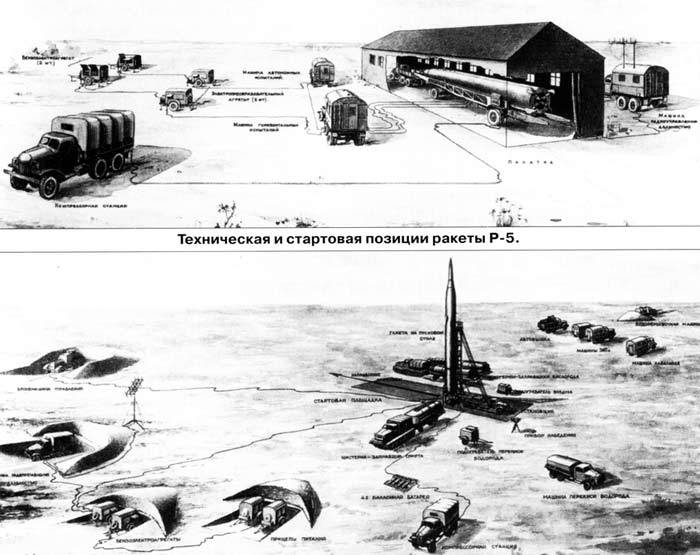
Photos from the site militaryrussia.ru
But "Ivanhoe" was silent: the rocket almost did not deviate from its intended target. Refat Appazov recalls: "One hundred and fifteen", - I hear the voice of the timekeeper and think: "The end is coming soon." “One hundred and twenty” - and here is the long-awaited moment: the engine is off, the light in the theodolite's field of view has gone out. You can breathe, move, talk. Looking up from the theodolite, the first thing he did was wipe his glasses. We shook hands, congratulated on our success and waited for the transport that would take us to the start. <...> As soon as we arrived at the place, he (Sergei Korolev. - Approx. Author) took me a little away from his large circle and asked how far the head part could deviate from the target. I replied that everything should be within the scattering ellipse, as there were no abnormalities in flight. "
Russian "Sly"
The successful completion of state tests is, as a rule, a sufficient basis for a new model to be adopted. It happened with the missile R-5M: Resolution of the Council of Ministers of the USSR from 21 June 1956, the world's first ballistic missile with a nuclear warhead (GRAU index - 8K51 initially - 8A62M) was adopted by the engineering teams of the Reserve of the High Command - since then known units of the future Strategic Missile Forces. However, this document only fixed the status quo, since the first part, armed with the modernized “fives”, took up combat duty in May.
The world learned about 1957 of the year about the appearance of a new, unprecedented weapon from the Soviet Union. On November 7, several transport installations with the P-5M took part in the parade on the occasion of the 40 anniversary of the October Revolution - this is how, according to tradition, the Soviet leadership showed foreign diplomats new weapons. An impressive size of the rocket (length - 20,8 m, diameter - 1,65 m, starting weight - 29,1 t) traveled through Red Square, convincing the world that the Soviet Army has the strongest means of delivering atomic weapons. The novelty has received the NATO index Shyster - that is, a cunning, chicrupter, solicitor in dark matters.
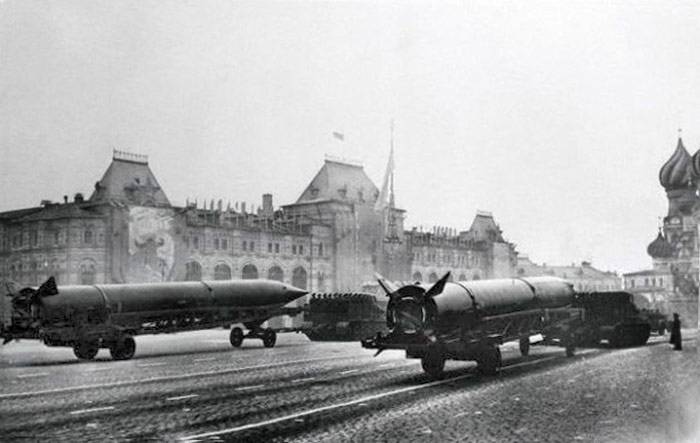
P-5M rockets at the Moscow parade 7 November 1957. Photos from kollektsiya.ru
This expressed the amazement that the West experienced when it learned of the existence of the “fives” of the new model. And Р-5М was really a very progressive weapon for its time. The time of full preparation for the launch is 2-2,5 hours, the time spent in a combat position on the launch pad is one hour, the power of the ammunition is 0,3 megatons. With a range of 1200 kilometers, these missiles, located near the western borders of the Soviet Union, could reach many important sites in Western Europe. But - not all. And therefore, already in February 1959, the two divisions of the 72-th Guards Engineering Brigade of the RVGK under the command of Colonel Alexander Kholopov were transferred to the GDR.
This movement took place in an atmosphere of such secrecy that even the leadership of a “friendly socialist country” did not know about it: the German communist government would hardly have liked the news of the deployment of Soviet atomic missiles in the country. One division was located near the city of Furstenberg, the second - close to the Templin military airfield. But, by the way, they did not stay there for long: in the autumn of the same year, both divisions returned to the place of deployment of the brigade in the city of Gvardeisk, Kaliningrad Region. By that time, the new P-12 missile with a longer range of flight was already in service, and the need to deploy the P-5M outside the Soviet Union had disappeared.
Rocket Р-5М in the park named after Hero of the Soviet Union, Lieutenant General Galaktion Alpaidze in the town of Mirny. Photos from russianarms.ru

P-5M at the entrance to the Central Museum of the Armed Forces of the USSR. Photos from the site militaryrussia.ru
The P-5M rockets remained in service for quite a long time - right up to the 1966 year. In total, the plant in Dnepropetrovsk (the future of Yuzhnoye Design Bureau) launched 48 missiles of this modification, of which the largest number — 36 — were on alert in 1960-1964. Gradually, in units armed with P-5M, they were replaced with P-12, and the first Soviet ballistic missiles with nuclear warheads began to take places on pedestals in different parts of the country. For a long time one of them towered over the entrance to the Metropolitan Museum of the Armed Forces, others were part of the exposition of the Sergey Korolev Museum in Zhytomyr, a monument in Mirny and in the Branch of the Central Museum of the Strategic Missile Forces in the town of Balobanovo ... But whatever fate they had prepared, they forever occupied their a place in the history of not only domestic rocket forces, but also in the history of all mankind - as a symbol of the beginning of the nuclear-missile era.
Using materials:
http://militaryrussia.ru
http://www.kap-yar.ru
http://www.russianarms.ru
http://rocketpolk44.narod.ru
http://www.famhist.ru
http://www.energia.ru
defendingrussia.ru
http://www.buran.ru
http://mil.ru
http://www.epizodsspace.narod.ru
http://www.globalsecurity.org
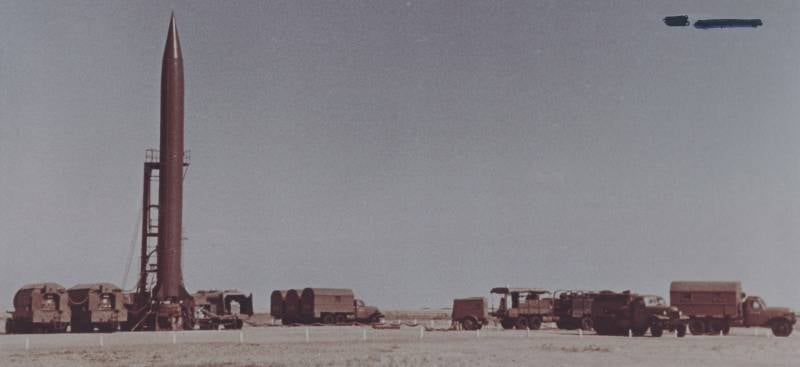
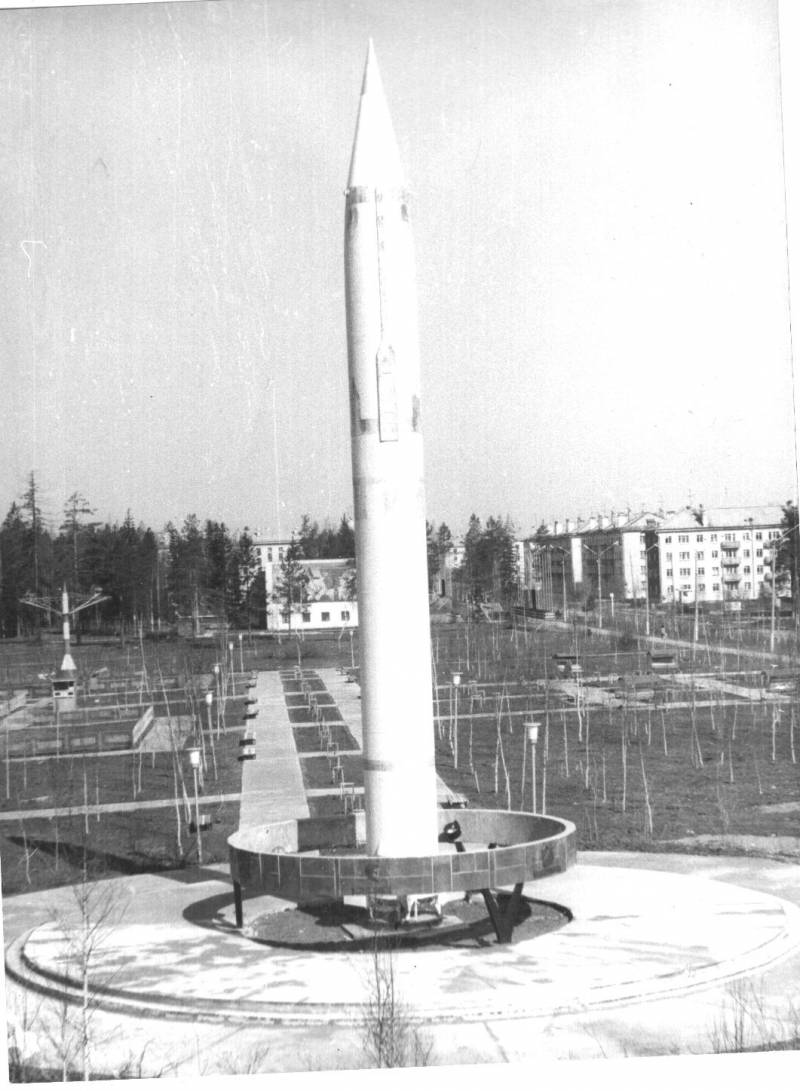
Information